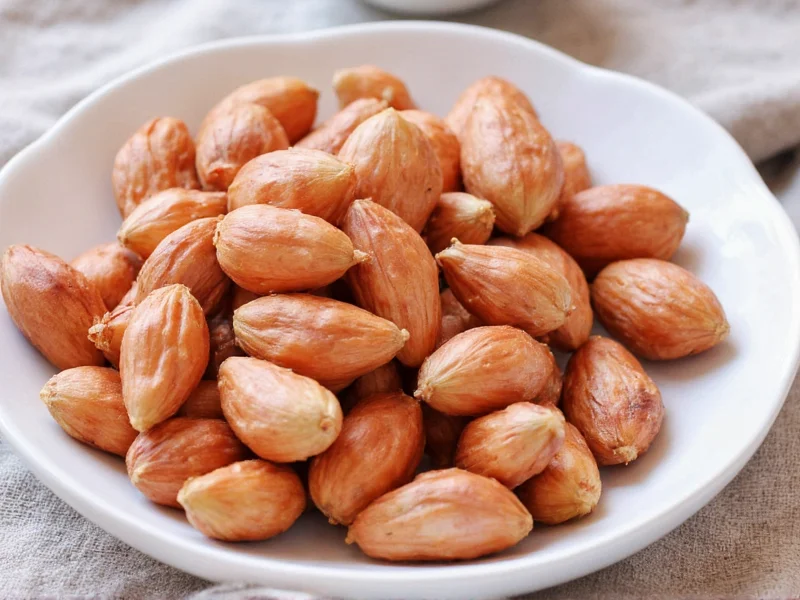Dried shallots transform the delicate flavor of fresh shallots into a shelf-stable pantry staple that professional chefs and home cooks increasingly rely on for consistent results. Unlike their fresh counterparts that spoil within weeks, properly dehydrated shallots maintain their distinctive sweet-onion profile for over a year without refrigeration. This preservation method captures the shallot's complex flavor compounds while removing moisture that causes spoilage.
Understanding Dried Shallot Varieties
Not all dried shallots serve the same purpose in cooking. Recognizing the differences between available forms helps you select the right product for your culinary needs:
| Type | Texture | Best Uses | Rehydration Time |
|---|---|---|---|
| Shallot Powder | Fine, uniform | Dry rubs, spice blends, soups | Instant (no rehydration) |
| Shallot Flakes | Thin, irregular pieces | Stews, sauces, braises | 10-15 minutes |
| Whole Dried Shallots | Intact bulb pieces | Slow-cooked dishes, pickling | 20-30 minutes |
Nutritional Profile and Culinary Advantages
Dehydration concentrates certain compounds while preserving most nutritional benefits. Dried shallots contain higher concentrations of quercetin and allicin per gram compared to fresh, though vitamin C content decreases during drying. The real advantage lies in flavor consistency—commercial drying processes standardize the pungency that varies dramatically in fresh shallots depending on harvest time and storage conditions.
Professional kitchens prefer dried shallots for menu items requiring precise flavor replication across hundreds of servings. Home cooks benefit from having this specialty ingredient available without hunting through grocery stores that often stock limited fresh shallot quantities. When evaluating dried shallot quality, look for uniform color (light golden to pale brown), absence of dark spots, and a clean, sweet aroma without mustiness.
Mastering Dried Shallot Substitutions
Understanding conversion ratios prevents recipe failures when substituting dried for fresh shallots. The general dried shallot to fresh shallot substitution guideline follows a 1:3 ratio by volume, but this varies by preparation method:
- Dry applications: Use 1 teaspoon dried shallot powder for every 1 small fresh shallot
- Rehydrated applications: Soak 1 tablespoon dried shallot flakes in 2 tablespoons warm water for 15 minutes to replace 1 small fresh shallot
- Intense flavor needs: Increase dried quantity by 25% for dishes where shallots play a starring role
Always add dried shallots early in cooking processes that include liquid to allow proper rehydration and flavor dispersion. For finishing touches requiring fresh shallot's crisp texture, consider using half dried (added early) and half fresh (added late) for balanced results.
Optimal Storage Techniques for Maximum Shelf Life
Proper storage determines whether your dried shallots maintain peak quality for 6 months or 18 months. Follow these evidence-based storage recommendations:
- Transfer from original packaging to airtight glass or metal containers (plastic may impart flavors)
- Include a food-safe desiccant packet to absorb residual moisture
- Store in a cool, dark cupboard away from heat sources (ideal temperature: 50-70°F/10-21°C)
- Never store above the stove or near dishwasher where humidity fluctuates
- Label containers with purchase date and check quarterly for clumping or odor changes
Freezing dried shallots extends shelf life but risks moisture absorption during thawing. If freezing, use vacuum-sealed containers with oxygen absorbers and allow containers to reach room temperature before opening to prevent condensation.
Avoiding Common Dried Shallot Mistakes
Even experienced cooks make errors with dried shallots that compromise dish quality. Watch for these frequent issues:
- Over-reduction in sauces: Dried shallots continue releasing flavor as they cook. Add them later in the process than fresh shallots to prevent overpowering dishes.
- Inconsistent rehydration: Uneven water distribution creates pockets of intense flavor. Stir rehydrating shallots periodically and use filtered water for best results.
- Heat sensitivity: High temperatures cause dried shallots to develop bitter compounds. Add them after reducing heat in sautéing processes.
- Ignoring regional variations: French gray shallots produce milder dried products than Dutch yellow varieties. Adjust quantities based on the source.
Practical Applications Across Cuisines
Dried shallots shine in specific culinary applications where their concentrated flavor provides advantages over fresh:
French cuisine benefits from dried gray shallots in bordelaise and bearnaise sauces where consistent onion flavor supports delicate emulsions. In Asian cooking, dried shallot powder creates uniform flavor in mass-produced curry pastes without the spoilage issues of fresh shallots. Middle Eastern spice blends like za'atar maintain better shelf stability when incorporating dried rather than fresh shallots.
For home preservation projects, whole dried shallots outperform fresh in pickling solutions by maintaining texture through the acidic environment. Their reduced moisture content also prevents unwanted dilution of brine concentrations.











 浙公网安备
33010002000092号
浙公网安备
33010002000092号 浙B2-20120091-4
浙B2-20120091-4